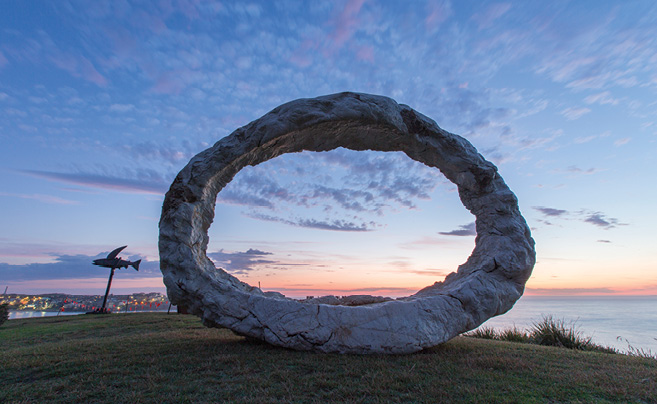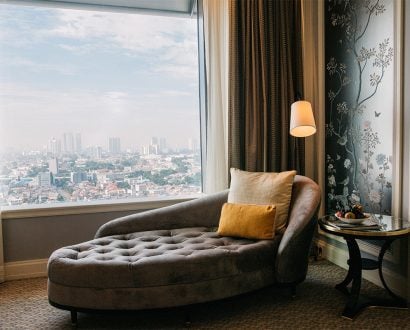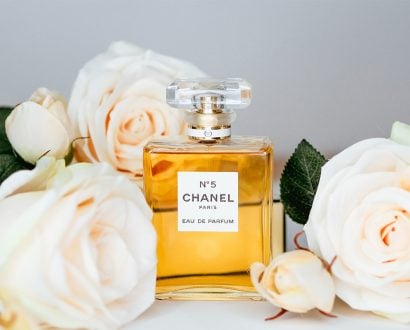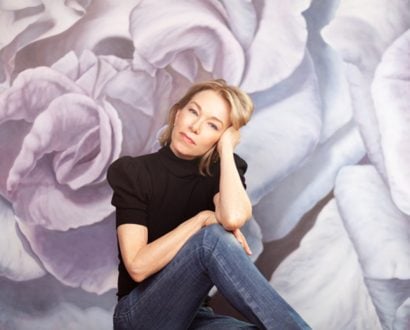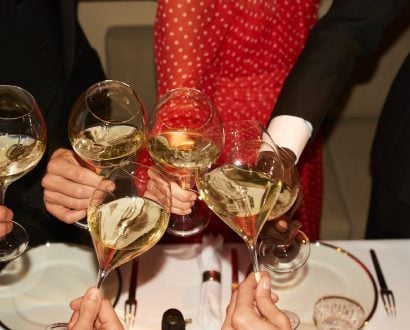Once a twenty-something runaway in Prague, dreaming of a future in film production, to now celebrating twenty years of running one of Australia’s most beloved free art exhibitions, David Handley says his famous event was only meant to be a side project. “Sculpture by the Sea was meant to be this little thing that I did on the side that might earn me a little bit of money while I had films in development,” he laughs. “This shows my naivety at the time. Once I got started with the exhibition, I didn’t look up for seven years. It was absolute tunnel vision.”
As this November marks the twentieth anniversary of the very first exhibition
along Sydney’s coastline, David puzzles over whether he would do it all again if he had known how challenging it would be. “I’d like to think I would,” he says. “I had no idea how hard it would’ve been to get here.” It’s no mean feat creating positive change in both the community and the art world, as well as taking on a new life direction — as Nobel Prize winning biologist Alexis Carrel once said, man cannot remake himself without suffering, for he is both the marble and the sculptor.
“When I think of the free art exhibitions we’ve inspired around the world; the children whose understandings of art and sculpture we’ve grown, the artists’ careers we’ve launched, sustained or evolved — it’s very humbling.” But what drew him to pursue this new path in the first place? “Naivety and exuberance,” David laughs. “I had an interest in the arts, and the world needed more free things. In my twenties I felt that the world was overly commercial and that was a drain on too many souls. Fantastic free events like Symphony under the Stars and the concerts in the Domain really added so much to our sense of community, and I wanted to be a part of that.”
What started as a one-day free sculpture exhibition along the Bondi to Tamarama coastal walk in 1997 has grown to become the largest annual sculpture exhibition in the world, running for eighteen days every spring, attracting 520,000 visitors, viewing more than 100 sculptures by artists from around the globe. The popularity of the Sydney exhibition also led to five one-off exhibitions in Noosa, Darwin, Albany, Bondi, and the Tasman peninsula as part of the 1998 Olympic Arts Festival’s A Sea Change, commissioned by the Sydney Organising Committee for the Olympic Games.
“When I think of the free art exhibitions we’ve inspired around the world; the children whose understandings of art and sculpture we’ve grown, the artists’ careers we’ve launched, sustained or evolved — it’s very humbling.”
In 2003, David oversaw the establishment of Sculpture by the Sea Incorporated as a not-for profit entity to manage the Australian exhibitions, permit access to grants from philanthropic foundations, and allow the generous contributions of donors to be tax deductible — a move that has seen annual sponsorship grow from $30,000 to $400,000. Another Sculpture by the Sea exhibition was later launched at Cottesloe Beach in Perth, and has been staged every year since 2005, featuring more than seventy sculptures and enjoyed by 260,000 visitors annually. This year the exhibition will feature its 2000th sculpture at the Sydney show.
In 2009, the first of three international editions of Sculpture by the Sea was staged in the City of Aarhus, Denmark, under the patronage of Prince Frederik and Princess Mary after the pair had enjoyed the exhibition so much while in Australia. Many artworks that once featured in the public exhibitions are also now a permanent fixture in Australia’s public places. “Sculpture by the Sea has achieved — and hopefully will continue to achieve — what I had set out to do all those years ago,” says David.
David was first drawn to sculpture as an art form during his time in Prague, when he was taken to an outdoor sculpture park set among thirteenth-century ruins in northern Bohemia. “Playing among the ruins and sculptures one night with my Czech art school friends, I had my first experience of the majesty of sculpture,” he says. “When I first noticed the theatricality and also the subtlety of a sculpture, I thought — this is the art form that I’ll work with for this public event. It has been so hidden from the world. Now this project has been a very big part of the evolution of the Australian cultural scene over the last twenty years. That’s very daunting and humbling to consider.”
Despite this, sourcing finance has been an issue since day one, with the first show staffed entirely by volunteers working out of David’s living room, on a shoe-strong budget of $11,000 — $8,500 of which went to the exhibiting artists in the form of sculpture awards, including the Sydney Water Sculpture Prize after the public organisation became the first principal sponsor. Sydney water provided $5,000 and assisted with advertising costs. The event’s first major sponsor dollars did not show up until twelve months later.
Today, public donors and corporate sponsors play a huge role in the continuation and development of Sculpture by the Sea, which has often been overlooked by national funding bodies. “Strangely enough, the public arts funding bodies don’t seem interested in sculpture. That makes it very challenging, both in terms of operations and our ability to support the artists.” Fortunately, support is still available. Thanks to the backing of Arts NSW and the Helen Lempriere Scholarships, plus the generosity of corporate sponsors like Rio Tinto, Hyundai, Allen Linklaters, and just recently Aqualand, the exhibition is still able to showcase sculptures, and even provide awards and subsidies for local and international artists taking part.
With the help of sponsor Iluka Resources, for the first time this year Sculpture by the Sea has provided beach access matting for its Cottesloe visitors with limited mobility and those using wheelchairs. “We had something like 200 people in wheelchairs come through on that day. They were able to get up close to the sculptures and we had numerous people in tears, both the visitors and those who made it happen. We even had a teenage boy tell us it was the first time he’d been on the beach in his life,” says David.
The future certainly looks bright for the not-for-profit, which has an upcoming smaller Sydney habourside exhibition in conjunction with the Barangaroo Delivery Authority. It also recently announced its involvement in the inaugural Sydney Sculpture Conference, taking place October 27 at the Sydney Opera House to provide a platform for discussion and critical thinking around the challenges, impact, and possibilities of sculptures in public spaces. Meanwhile, the art exhibition continues to grow in popularity and global exposure — featured artists hail from sixty-eight countries, with the majority of foreign representation spanning Japan, Denmark, the US, New Zealand and the UK.
“Any artist in the word can apply to be in Sculpture by the Sea. There is no entrance criteria except for quality, and since we don’t have a theme, the artists can exhibit whatever they want, and that artistic freedom is very important,” says David. “I love the idea of artists as dreamers, and I want to continue to help facilitate those dreams.”

